Something is wrong with the DC Universe, and Wally West is desperately trying to fix it… or die trying.
That’s the simple concept behind DC Rebirth, which might be the most complex superhero event of the modern era. By the time this piece will air, most people who will have read the issue will already know what happens, so if you’re worried about spoilers, then get out there and read this issue first. Trust me – it’s worth it.
Geoff Johns, the man who has been not only one of DC’s top writers but probably the biggest creative force behind the company’s decisions in the past decade or so, is on clean-up duty in Rebirth. This story, which skewers the New 52 continuity, is split into four chapters and an epilogue, each of which offer meta-deconstructions of the state of DC Comics. Rebirth is so introspective that it almost reads like narrative journalism, examining the decisions made that has made the DC Universe what it is today, theorizing about the roots of the cause, and turning the solution of the problem into a narrative. It’s crazy, it’s beautiful, and it’s something that only comics can do.
Let’s unpack that a little.
DC Rebirth opens with the above nine-panel grid, which introduce Wally’s problem with a poignant speech that encapsulates the theme of the entire issue. Like Wally’s uncle’s watch, which was passed down through the generations, the iconic characters of the DC Universe are passed down through generations of creators, of fans. “Every second is a gift” is inscribed on the back of the watch, and I can’t help but feel as if that is Geoff Johns looking at the gift he’s been given, control over the heroes that inspired him as a kid, and looking at them with new appreciation.
The next page is a shot of the world, our world, in which our superheroes live. Wally West’s narrations summarize what critics of the New 52 have been saying throughout its run, and even before it: “I love this world. But there’s something missing.”
This poignant narration continues through the issue as Wally West, who has been forgotten in this world, attempts to break through. Beyond the poetic metaphor of his narration, what I love about this issue is how careful Geoff Johns is to respect every fan of the DC characters. A portion of the readers were hoping that Rebirth would tear down the New 52 and bring back the original DC Universe as if it never happened. Here’s the thing, though – the New 52 includes stories that many, many readers were invested in for five years, and Johns is aware of that. Instead of burning the house down, Johns builds his narrative around the idea that the DC Universe isn’t what it’s supposed to be. We get Wally back with this issue, which is an enormous win, but what’s even more fascinating is that his return opens up a compelling mystery that can bring back the old universe (and is in fact about the old universe) while also operating within the New 52’s universe. Rather than another big cosmic shift that barrels through the last five years of story, Johns introduced a large-scale mystery and begins to build a bridge from the old stories to the new. How we get there, after all, is the fun part. I think that comic book events forget that a lot, a failing of which Rebirth feels keenly aware.
The climax of the issue reunites Wally with Barry Allen, who, when he begins to see Wally die, recognizes his old friend and gives him something to hold on to… hope. After their tearful hug, which reads to me like a heartfelt apology by Johns to Wally West (and perhaps the other forgotten heroes) for leaving him behind, we get what is already one of the most talked about and controversial scenes in comics this year. As Wally West speaks about a coming war between hope and despair, Batman finds the blood-splattered smiley button from Watchmen embedded in a rock in the Batcave. Then, we transition to Mars, where a conversation between Dr. Manhattan and Adrian Veidt straight out of the last issue of Watchmen plays out over another series of images of the watch from the opening page.
It’s a bold move. It’s bolder, even, than DC’s Before Watchmen launch, and is likely to both fascinate and infuriate even more readers. I’m not sure if we should read the “hope and despair” comment as an indictment of the darkness of Watchmen and the impact it had on superhero comics, or as commentary on the way that many superhero comics jacked Watchmen’s style and regurgitated it in a way that did a disservice both to Watchmen and the superhero comics that co-opted that dark and gritty style. Either way it goes, I’m stunned by the scope and humbled by the poignancy, artfulness, and balance of the storytelling in DC Rebirth. To call it a return to form seems odd, as the comic is as much about examining the process of the form as it is rebuilding, so I suppose I’ll just call it what it is.
It’s the best superhero comic I’ve read in a long time.
PAT SHAND writes comics (Vampire Emmy, Hellchild, Van Helsing), novels (Iron Man, Charmed), and pop culture journalism (Sad Girls Guide, Blastoff Comics). The first DC comic he ever loved was an issue of Supergirl, and he is beyond excited to fall in love with DC Comics all over again.


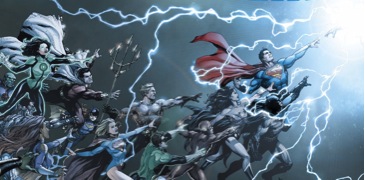
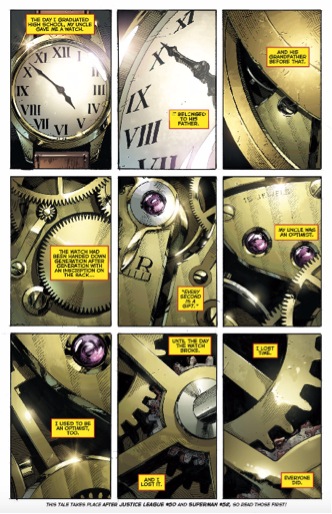
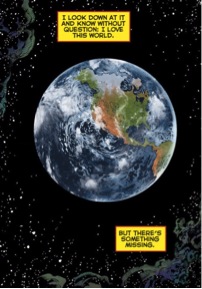
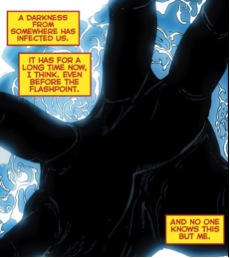
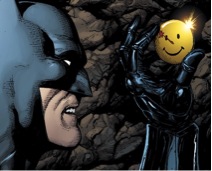
Comments are closed.